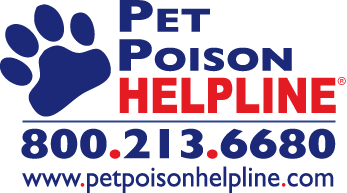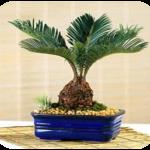Top 10 Plants Poisonous to Pets

Tips from Pet Poison Helpline to Help Keep Your Pet Safe!
Every day, Pet Poison Helpline receives dozens of phone calls from dog
owners and cat owners saying, “My cat ate a lily!” or “My dog ate a plant.
Is it poisonous?” Some of the most poisonous plants for dogs and cats
are reviewed below. While there are thousands of species of plants
and flowers, only a small percentage of plants are truly dangerous and
poisonous to your pet. Make sure you know which plants are most
deadly to avoid your dog or cat from getting into these poisonous flowers
and poisonous plants!
Autumn Crocus

There are two Crocus plants: one that blooms in the spring and the other
in the autumn (Colchicum autumnale). The spring plants are more common
and are part of the Iridaceae family. These ingestions can cause general
gastrointestinal upset including vomiting and diarrhea. These should not
be mistaken for Autumn Crocus, part of the Liliaceae family, which contain
colchicine. The Autumn Crocus is highly toxic and can cause severe vomiting, gastrointestinal bleeding, liver and kidney damage, and respiratory failure.
If you’re not sure what plant it is, bring your pet to their veterinarian
immediately for care. Signs may be seen immediately but can be delayed
for days.
Azalea

In the same family as rhododendrons, azaleas (Rhododendron spp.)
can have serious effects on pets. These plants contain grayanotoxins
which disrupt sodium channels affecting the skeletal and cardiac muscle.
All parts of the plant are considered poisonous, and as little as
ingestion of 0.2% of an animal's body weight can result in poisoning.
Eating even a few leaves can result in vomiting, diarrhea and
excessive drooling; without immediate veterinary attention, the
pet could fall into a coma and possibly die. The overall prognosis
is fair with treatment.
Cyclamen

The cyclamen (Cyclamen persicum) is a beautiful houseplant
commonly sold in supermarkets. It is also called the Persian violet
and Sowbread. Cyclamen contains irritating saponins, and when
any part of the plant (especially the tubers or roots) are chewed
or ingested by dogs and cats, it can result in clinical signs of drooling,
vomiting and diarrhea. With large ingestions, these plants can
result in cardiac problems (e.g., abnormal heart rate and rhythm),
seizures and death.
Daffodils

These flowers found in the genus Narcissus contain lycorine, an alkaloid
with strong emetic properties (something that triggers vomiting).
Ingestion of the bulb, plant or flower can cause severe vomiting,
diarrhea, abdominal pain, and even possible cardiac arrhythmias or
respiratory depression. Crystals are found in the outer layer of the
bulbs, similar to hyacinths, which cause severe tissue irritation and
secondary drooling. Daffodil ingestions can result in more severe
symptoms so if an exposure is witnessed or symptoms are seen,
we recommend seeking veterinary care for further supportive care.
Diffenbachia

Popular in many homes and offices, Dieffenbachia species contain i
nsoluble crystals of calcium oxalate called raphites. Chewing or biting
into the plant releases the crystals which penetrate tissue resulting
in injury. When dogs or cats ingest insoluble calcium oxalate-
containing plants, clinical signs may be seen immediately and include
pawing at face (secondary to oral pain), drooling, foaming, and
vomiting. Moderate to severe swelling of the lips, tongue, oral cavity,
and upper airway may also be seen.
Kalanchoe

Kalanchoe (Kalanchoe blossfeldiana) is a common, beautiful houseplant
with hundreds of flowers (which range from yellow, red, pink, etc.).
All parts of the plant are generally considered toxic - even the water
in the vase has been reported to cause toxicosis. Clinical signs from
ingestion include cardiovascular signs (e.g., abnormal heart rhythm
and rate), electrolyte abnormalities (e.g., a life-threatening high
potassium level), gastrointestinal signs (e.g., nausea, drooling,
vomiting, etc.), or central nervous system signs (e.g., dilated pupils,
tremors, seizures). In severe cases, an expensive antidote,
digoxin-specific Fab fragments, can be used for severe, life-threatening
cases.
Lilies

There are dangerous and benign lilies out there, and it's important
to know the difference. Peace (Spathiphyllumspp.), Peruvian
(Alstroemeria aurantiaca), and Calla (Zantedeschia spp.) lilies
contain oxalate crystals that cause minor signs, such as tissue
irritation to the mouth, tongue, pharynx, and esophagus - this
results in minor drooling. The more dangerous, potentially fatal lilies
are true lilies, and these include Tiger, Asiatic, Easter and Japanese
Show lilies (found in the genus Lilium) and Day lily (Hemerocallis spp.),
- all of which are highly toxic to cats! Even small ingestions
(such as 2-3 petals or leaves) can result in severe kidney failure.
If your cat is seen consuming any part of a lily, bring your cat
(and the plant) immediately to a veterinarian for medical care.
The sooner you bring in your cat, the better and more efficiently
we can treat the poisoning. Decontamination (like inducing vomiting
and giving binders like activated charcoal) are imperative in the
early toxic stage, while aggressive intravenous fluid therapy, kidney
function monitoring tests, and supportive care can greatly improve
the prognosis.

Oleander
Oleander (Nerium oleander) is an outdoor shrub, popular for its
evergreen qualities and delicate flowers. All parts of the plant
are generally considered toxic - even the water in the vase has
been reported to cause toxicosis; however, the leaves and flowers
are extremely toxic if ingested and can cause severe vomiting,
slow the heart rate and possibly even cause death.
Sago Palm

Very popular in warmer climates, this household and outdoor plant
can be very harmful to pets. All parts of sago palm (Zamia spp.)
are considered poisonous, with the seeds (nuts) being the most
toxic part of the plant. Sago palm contains cycasin, which is the
primary active toxic agent resulting in severe liver failure in dogs.
Ingestion results in acute gastrointestinal signs (e.g., drooling,
inappetance, vomiting, diarrhea) within 15 minutes to several hours
after ingestion. Central nervous system signs (e.g., weakness,
ataxia, seizures, tremors, etc.) and severe liver failure can be seen
within 2-3 days post-ingestion.
Tulips and Hyacinths

Tulips (Tulipa spp.) contain allergenic lactones while hyacinths
(Hyacinthus orientalis) contain similar alkaloids. The toxic principle
of these plants is very concentrated in the bulbs (versus the leaf
or flower), so make sure your dog isn't digging up the bulbs in the
garden. When the plant parts or bulbs are chewed or ingested, it
can result in tissue irritation to the mouth and esophagus. Typical
signs include profuse drooling, vomiting, or even diarrhea, depending
on the amount consumed. There's no specific antidote, but with
supportive care from the veterinarian (including rinsing the mouth,
anti-vomiting medication, and possibly subcutaneous fluids),
animals do quite well. With large ingestions of the bulb, more severe
symptoms such as an increase in heart rate and changes in
respiration can be seen, and should be treated by a veterinarian.
These more severe signs are seen in cattle or our overzealous, chowhound Labradors.
This is only a partial list of poisonous plants. For a more complete
list of plants poisonous to cats and dogs, visit our website at: http://www.petpoisonhelpline.com/poisons.
If you suspect your pet has ingested any of these items or any
other questionable substance, call Pet Poison Helpline or your veterinarian
for assistance. Accurate and timely identification of the suspected
substance is very important. Having the container, package, or label
in hand will save valuable time and may save the life of your pet.
About Pet Poison Helpline: Pet Poison Helpline is a service available 24 hours, seven days a week for pet owners, veterinarians and veterinary technicians that require assistance treating a potentially poisoned pet. Staff can provide treatment advice for poisoning cases of all species, including dogs, cats, birds, small mammals, large animals and exotic species. As the most cost-effective option for animal poison control care, Pet Poison Helpline's fee of $39.00 per incident includes follow-up consultations for the duration of the poison case. Pet Poison Helpline is available in North America by calling 800-213-6680. Additional information can be found online at www.petpoisonhelpline.com.